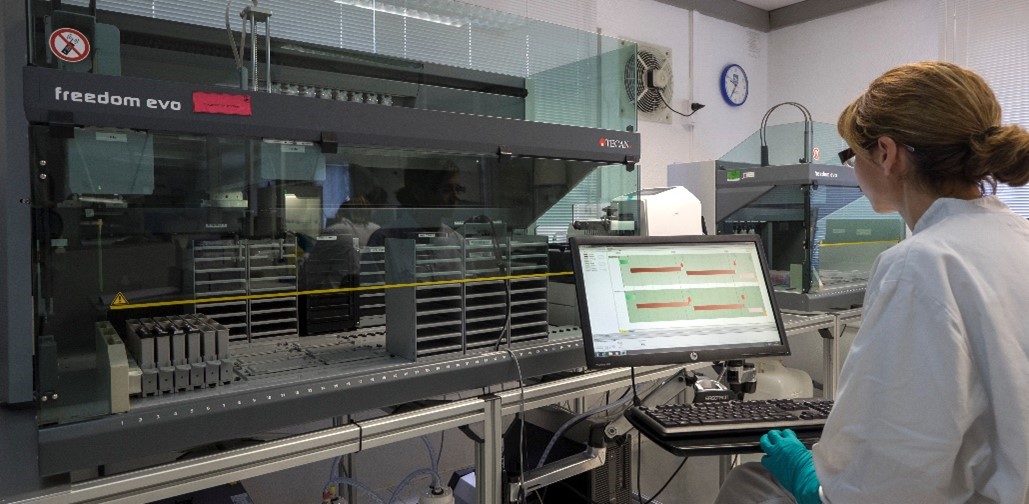Coccidiosis is a common parasitic disease of chickens caused by protozoans of the genus Eimeria. It is one of the most important diseases of poultry worldwide, causing significant economic losses due to reduced growth, mortality, and costs of treatment.
What is Coccidiosis?
The pathogenesis of coccidiosis is a disease of the intestinal tract that is caused by microscopic parasites called coccidia. The Eimeria biological cycle, a very complex one, involves chickens becoming infected by ingesting sporulated oocysts, the infective stage of the parasite. Once ingested, the oocysts hatch in the intestine and release sporozoites, which invade the intestinal cells. The sporozoites undergo multiple rounds of replication within the intestinal cells, eventually rupturing the cells and releasing more oocysts into the environment.
Types of Coccidiosis in Poultry
There are seven different species of coccidia that can infect chickens:
E. acervulina, E. maxima, E. mitis, E. praecox, and E. tenella: These species are responsible for coccidiosis in short life-cycle poultry (broilers).
E. necatrix and E. brunetti: These species, along with the five mentioned above, can infect long life-cycle poultry (breeders and layers).
Each species of coccidia has its own unique target site within the intestine, leading to slightly different symptoms in infected birds.
How Do Chickens Get Coccidiosis?
Chickens become infected with coccidiosis by ingesting oocysts that are shed in the feces of infected birds. The oocysts can survive in the environment for several months, and they are most infective when they are sporulated. Sporulation occurs when the oocysts mature in the environment under warm, moist conditions.
Symptoms of Coccidiosis
It is very important to not confuse the symptoms of coccidiosis in poultry with necrotic enteritis. The symptoms of coccidiosis can vary depending on the species of coccidia involved and the severity of the infection. However, some common poultry symptoms include:
- Diarrhea
- Bloody feces
- Reduced absortion of pigmentation in chickens
- Reduced productive performance
- Disruption of gut health
- Lethargy
- Reduced apetite
Diagnosis of Coccidiosis
Coccidiosis can be diagnosed by examining feces of infected birds for the presence of oocysts and or the lesion score technique.
- Flotation methods (including Oocyst per-Gram (OPG) evaluation): Quantify avian coccidiosis oocysts through microscopy or using artificial intelligence, such as OOSCAN®.
- Lesion Score (Johnson & Reid, 1970): Scores based on observed gut lesions caused by different Eimeria species in various intestinal sections: lesions score of E. acervulina, E. maxima, E. tenella; lesion score of E. mitis, E. praecox and lesion score of E. necatrix and E. brunetti.
- qPCR (quantitative Polymerase Chain Reaction): Identifying the exact Eimeria species present.
By combining these traditional and newer methods, more comprehensive understanding of the type and severity of coccidiosis infection in chickens can be gained.
Treatment of Coccidiosis
There are a number of different drugs that can be used to treat coccidiosis. If an outbreak of coccidiosis is confirmed, the usual treatment recommended for the birds is the administration of some of the coccidicidal products available on the market. These include products with active ingredients such as amprolium, toltrazuril or medicinal products of the sulphonamide group.
If the outbreak is not confirmed, it is recommended to perform a differential diagnosis with other enteric diseases, especially necrotic enteritis, to determine the appropriate time for coccidiosis treatment.
Prevention of Coccidiosis
Preventing coccidiosis is key to controlling the disease and minimizing its impact on your poultry production. Effective prevention methods include:
- Vaccination: Using attenuated or non-attenuated vaccines to induce immunity.
- Biosecurity: Implementing measures to prevent disease introduction.
- Litter management: Maintaining dry and fluffed litter, regularly removing wet or contaminated litter.
- Coccidiostats: When using anticoccidial drugs, be aware of potential resistance. Prolonged use can reduce the effectiveness of these drugs against Eimeria. Therefore, a rotation strategy can be implemented.
Coccidiosis vaccines
Vaccination represents the main alternative for the protection of birds against the disease. There are two diferent types of coccidiosis vaccines exist:
- Non-attenuated vaccines: Contain live, full-strength coccidia parasites. They can cause more severe disease but don’t offer stronger protection. The consequential problems that have traditionally been associated with the use of this vaccines against coccidiosis are the intestinal damages caused by these non-attenuated or less attenuated strains.
- Attenuated vaccines: Live vaccine attenuated by precociousness. Lower damage of the gut cells and providing the necessary immune response against coccidiosis, also promotes the recovery of sensitivity of field strains of Eimeria spp to coccidiostats.






